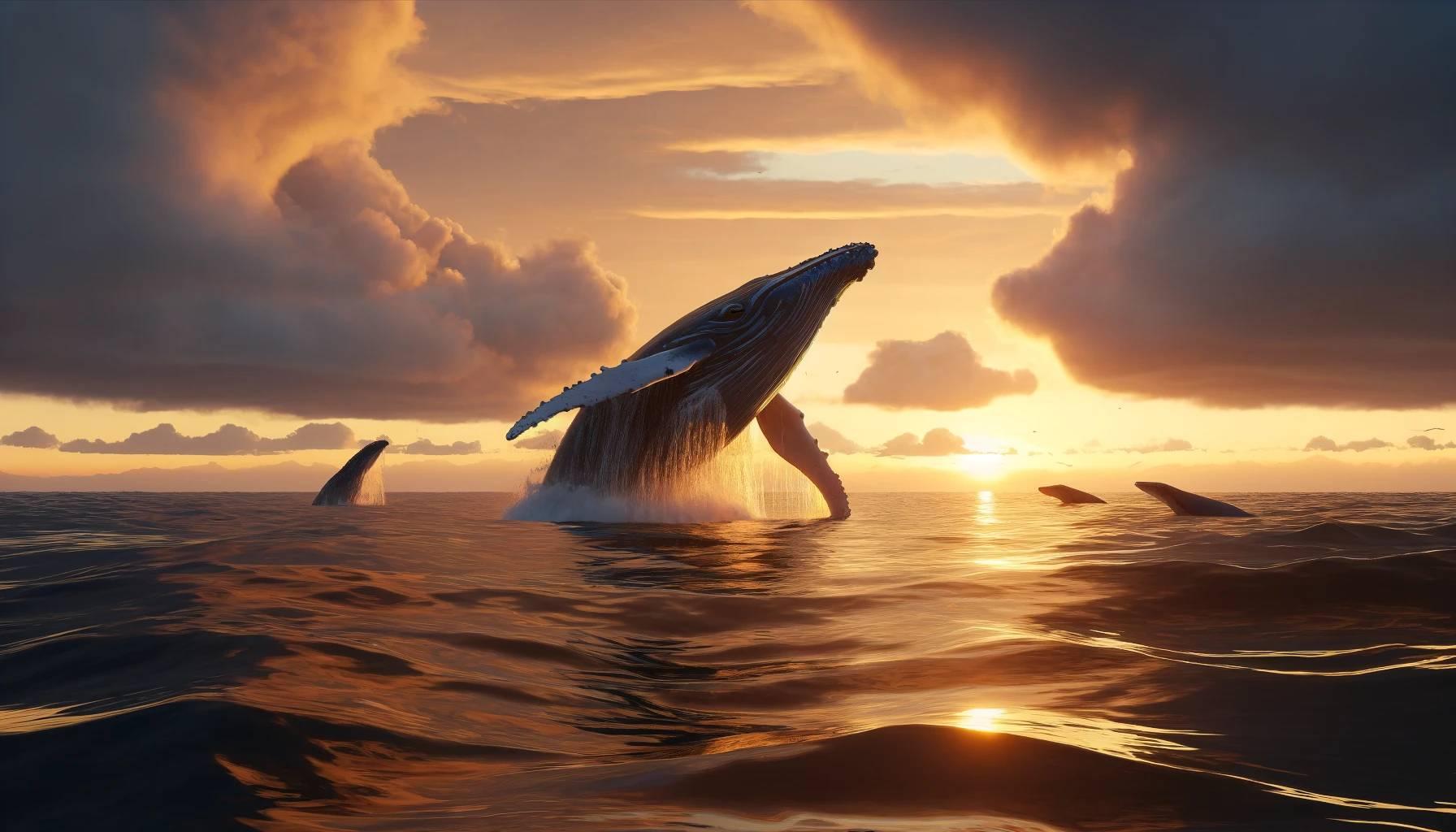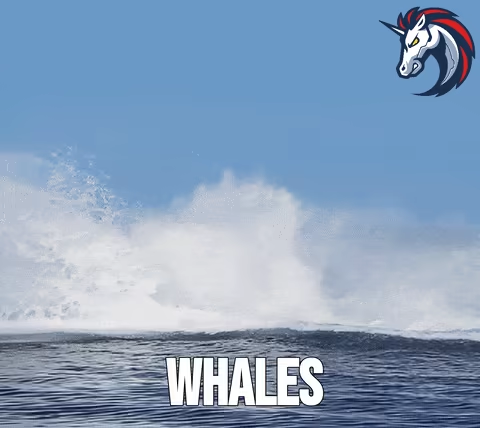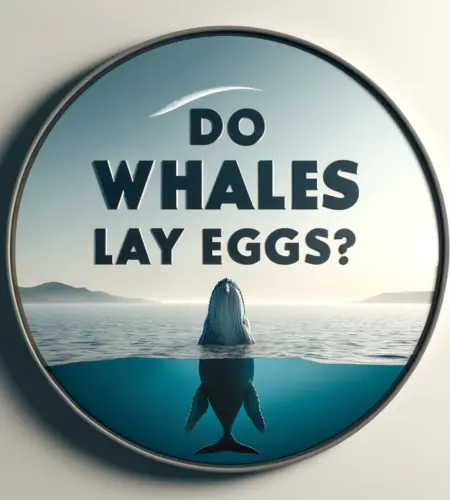Introduction
Have you ever wondered about whales and their babies? Well, you’re in the right place to learn all about it! This article will explore how whales reproduce, care for their young, and how their life cycle compares to other sea creatures. Let’s dive into the fascinating world of whale reproduction.
Do Whales Lay Eggs? Understanding Whale Reproduction
First things first, let’s clear up a common question: do whales lay eggs? No, they don’t. Whales are mammals, just like humans, dogs, or elephants.
This means they give birth to live young and feed them with milk produced by the mother. Unlike fish or turtles, which lay eggs, whales have a completely different approach to bringing new life into the world.
How Do Whales Give Birth?

Whales give birth in the water, and it’s quite a sight to see! The mother whale floats near the surface and gently helps her newborn calf come out. Right after birth, the calf needs to breathe, so its mom nudges it to the surface for its first gulp of air. Here’s a quick look:
- Location: In the ocean, near the surface.
- Help: Mom and sometimes other whales in the pod help.
- First Breath: The newborn is brought to the surface quickly to breathe.
This careful process ensures the baby whale starts off well. Mother whales are very attentive, staying close to their calves to protect and nurse them. Watching a whale give birth reminds us how similar they are to us, caring for their young with such tenderness.
Comparing Whale Reproduction to Other Marine Animals
Whales have a unique way of bringing babies into the world that’s pretty different from other sea creatures. Let’s take a look at how whales do it compared to fish and sea turtles, which are also common in the ocean but follow a totally different method.
- Whales: They are mammals, which means they give birth to live babies, one at a time. These babies, called calves, are pretty large right from birth. Mother whales are very caring and stick close to their calves, feeding them milk and teaching them how to swim and survive in the ocean.
- Fish: Most fish lay eggs. They can lay hundreds or even thousands of eggs at once, which they leave to hatch on their own. There’s no parental care after the eggs are laid, which means many of these eggs don’t survive to become adult fish.
- Sea Turtles: Like fish, sea turtles lay eggs too. They come up on beaches, dig holes in the sand, and lay their eggs there. After covering the eggs with sand, the mother turtle heads back to the sea, leaving the eggs to hatch on their own. The tiny turtles that hatch must make it to the ocean by themselves, which is a dangerous journey with many risks.
Here’s a quick comparison:
- Birth Type: Whales have live births; fish and turtles lay eggs.
- Parental Care: Whales care for their young closely; fish and turtles do not care for their eggs after laying them.
- Survival Strategy: Whale calves have a higher survival rate due to parental care, while fish and turtles rely on laying many eggs to increase the chances of some surviving.

Understanding these differences helps us see why whale populations are more sensitive to changes in their environment. Since they don’t have many babies at once, protecting each whale and their habitat is crucial for keeping their numbers healthy.
So, when we talk about protecting the ocean, it’s not just about keeping the water clean; it’s also about making sure these magnificent creatures have a safe place to raise their families.
FAQ: Common Questions About Whale Reproduction
Whales carry their babies for about 11 to 16 months. This long pregnancy helps the baby whale develop fully before it’s born into the cold and deep ocean. Different types of whales might carry their young a bit longer or shorter, depending on their species.
Imagine a newborn that’s as long as a large van! Newborn whales are typically 13 to 16 feet long when they are born. They’re huge because they have to be strong enough to swim in the ocean right away.
Whales usually have just one calf at a time. This allows the mother whale to focus all her energy and attention on protecting and nurturing her single calf, which improves the chances of the calf’s survival in the wild ocean.
All whales give birth to live young, but how they do it can vary a bit. Some might seek shallow waters to give birth, while others might stay in deeper areas. Each species has its unique ways that suit their size, habitat, and lifestyle.
Most whales have a baby every 2 to 3 years. They take long breaks between having calves because raising a baby whale takes a lot of energy and resources. During this time, the mothers teach their young all they need to know about surviving in the ocean.
Besides whales, other marine mammals like dolphins and seals also give birth to live young. These animals form close bonds with their babies, nursing and protecting them until they can fend for themselves.
Whale mothers are very caring. They nurse their calves for several months, even up to two years with rich, fatty milk. They also protect them from predators and teach them how to find food and navigate the marine environment.
No marine mammals lay eggs. All of them, including whales, dolphins, and seals, give birth to live young. This is one of the key traits that define mammals, even those living in the ocean.
The reproduction of whales can be affected by their environment. Things like the temperature of the water, the availability of food, and the overall health of the ocean can all play a big part in whether whale populations can grow or not.
Today, whales face several big threats like pollution, getting hit by ships, and being caught accidentally in fishing gear. These issues can hurt their chances to live long and have babies, which is why there are many efforts around the world to protect them.
Read on: Do Rabbits Lay Eggs
Conclusion
In this post, we’ve learned that whales do not lay eggs but give birth to live young, which they care for attentively. Understanding how whales reproduce and grow helps us appreciate these magnificent creatures and highlights the importance of protecting them and their habitats. Remember, every time you help keep the oceans clean, you’re helping whales too!

